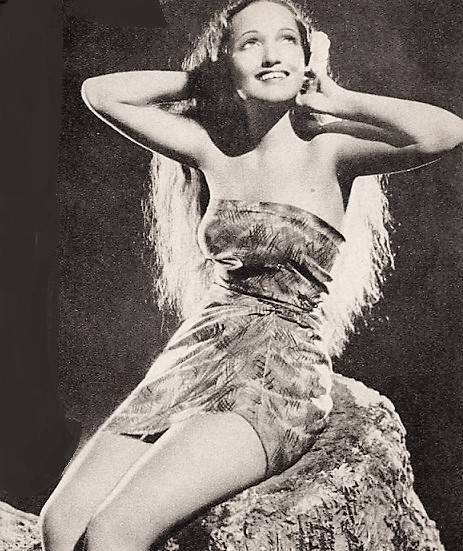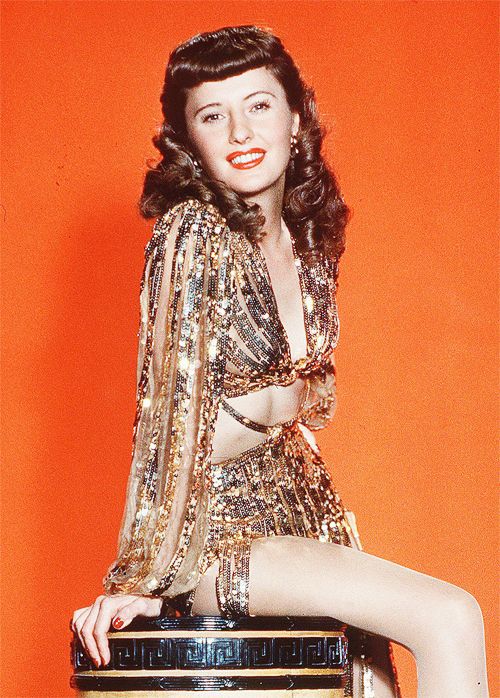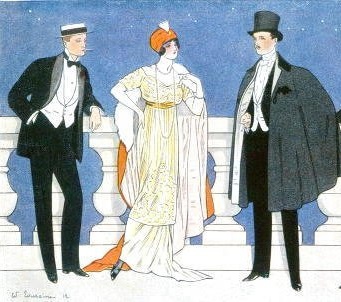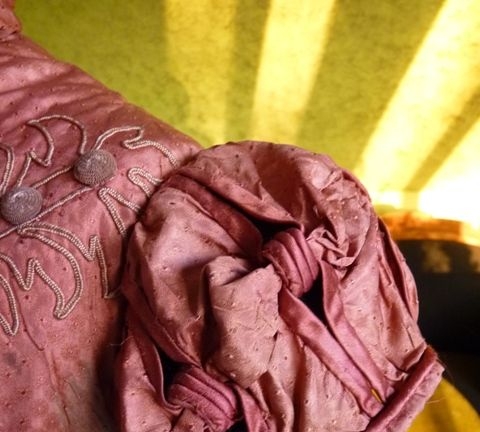Edith Head: Star Costumer

by Kali Pappas, First published for the January/February 2012 issue of Finery

Despite her long studio career and a stunning cache of major awards (including a record-setting 8 Oscars and 35 Oscar nominations), costume designer Edith Head is a star whose name isn’t widely recognizable. Her work, however, is instantly familiar to virtually everyone. She’s the woman responsible for the iconic fashions appearing in mid-century classics such as Roman Holiday, To Catch a Thief, Vertigo, and Breakfast at Tiffany’s.
Head spent 44 years as head designer at Paramount, worked 14 years at Universal, and collaborated on various projects for other studios over the years, aggregating a portfolio of work totaling several hundred movies.
“I do so many films that I would only like to send you work that is outstanding, or of importance to your collection,” she wrote in 1967 to the Wisconsin Center for Theatre Research, in response to a request to create an “Edith Head Collection.”
Her diverse collection of designs includes everything from period fashions to fantasy creations. Though she downplayed the importance of cutting-edge contemporary fashion to her work (“What is shown in Paris today is a dead duck tomorrow” she once said), Head was also in many ways a fashion trend setter. The popular demand for sarong-style dresses in the late 1930s and 1940s grew out of Head’s iconic designs for Dorothy Lamour in The Jungle Princess (1936).

Originally an instructor of French and art, Head broke into the movie business in 1924 as an inexperienced costume sketch artist. Over a fourteen-year period she graduated from styling and designing for background players to the studio’s head of costuming in 1938.
From the 1920s through the 1970s, Edith Head clothed a veritable “who’s who” of Hollywood stars, including Clara Bow, Ingrid Bergman, Bette Davis, Elizabeth Taylor, and Grace Kelly. In addition to her film work, she designed personal wardrobes for personalities like Lamour and Barbara Stanwyck, who relied on her to make them “look like stars.” Head designed two stunning gowns for her friend Joan Crawford to wear as a presenter at the 1965 Academy Awards ceremony. Over the years, she also advised a number of other stars as they prepared their Oscars wardrobes. “One of my extracurricular duties is as a consultant to the Academy,” she wrote in 1959, “and during the month of March the number of problems and diagnoses are of epidemic proportions.”

Befitting a designer of her stature, Head developed her own tremendous personal style. Her striking round glasses, Anna May Wong-inspired bangs, and understated suits became her trademarks in later years, while sleek bobs and flapper togs set her apart as a younger professional. Always imaginative, in childhood she recalled collecting scraps of fabric to “dress” her animal friends and decorate her homemade doll house. “Anyone who can dress a horn toad can dress anything!” she once wrote.
Miss Head possessed diverse abilities as a designer and stylist, but always retained a particular interest in feminine shapes and details when dressing leading ladies. “She was a ‘dress girl,’ that is, she expressed her rebellion against the current mannish trends by wearing simple dresses,” Stanwyck once said of Head.

The designer enjoyed largely pleasant working relationships with her stars and colleagues, citing collaborations with actresses like Mae West and Patricia Morison, a former design sketch artist whom Head invited to design pieces for Morison’s scenes in The Magnificent Fraud (1939). “The star should be consulted a great deal, because it is the star who has to wear the costume to help them project the character,” Head told journalist Tony Macklin in a taped interview from the 1970s.
“She was not…one of those flamboyant designers who wanted their name on everything,” Morison remarked. “She…sold the character.”
“The boss is the script,” Head herself essentially concurred in her interview with Macklin. “I as a designer work with every other technical person [on the project…we…] work more or less as a team.”

Edith Head’s job was not without its complications, however. “Dressing Kim Novak for her role in Alfred Hitchcock’s Vertigo put to the test all my training in psychology.” While Head and Hitchcock were apparently on the same page regarding Novak’s costumes, Novak was unhappy with the director’s color choices for the famous gray “Madeleine” suit and accompanying black shoes.
As early as the 1930s, Head took on the role of spokesperson for her studio department, a function she performed until the end of her life. Her practical approach to clothing also made her a fashion advisor to average midcentury American women. She wrote books and columns, hosted her own radio shows, and was a regular guest on television, sitting for interviews and even appearing as herself in a major cameo role on Universal’s legendary Columbo series.
In her writings and broadcasts, Head provided expert opinions on practical wardrobe considerations, such as the right colors, fabrics and shapes for different activities or times of day, and suggestions for dressing to accentuate or downplay various figure elements. To a teenager concerned about her pear shape, Head advised in one 1950s column, “If I were you, I would forget the extra inch or so [at the hip] and wear all your beautiful full skirts. Your hips will be minimized if you color-match waist or sweater to your skirt.”
Highlighting both the confidence-building qualities of fashion and the idea that style is accessible to everyone, Head stated in her 1959 book Dress Doctor that “clothes are a practical therapy, and a woman’s happiness – her outlook on life, her ability to meet the terrible competition in love and in war, in business and before the eagle eye of her sisters – can be decided by what she wears. The way you dress affects you; it also affects the people around you.”
While her most high-profile legacies are undoubtedly her spectacular film wardrobes, Edith Head’s broadest, and most practical, contributions are those she made to the American everywoman.


Leave a comment